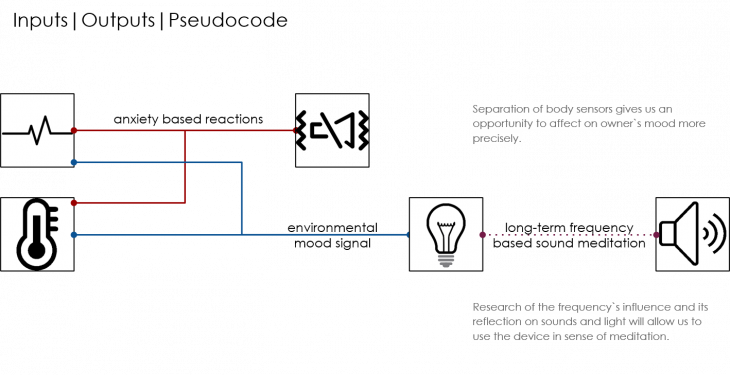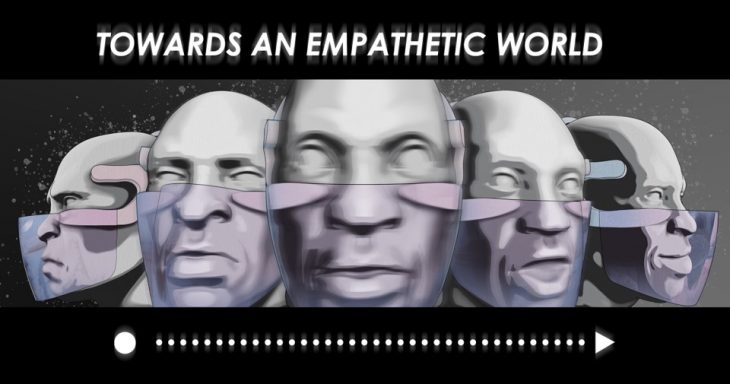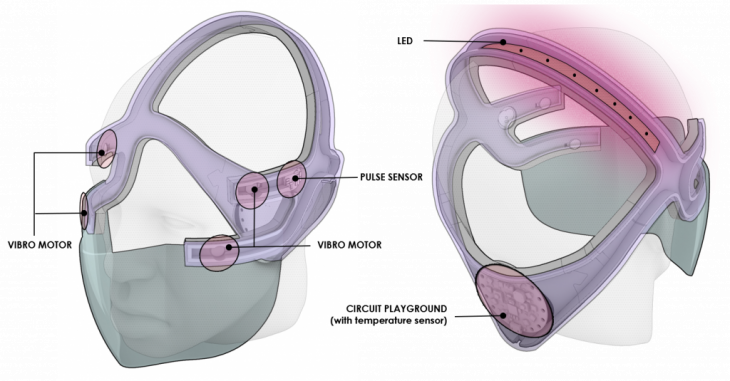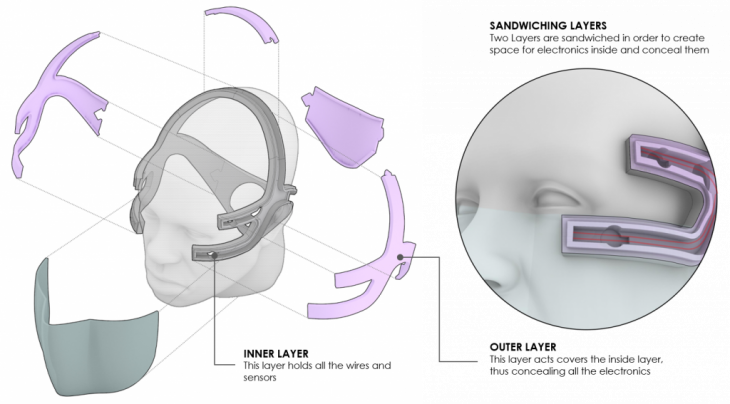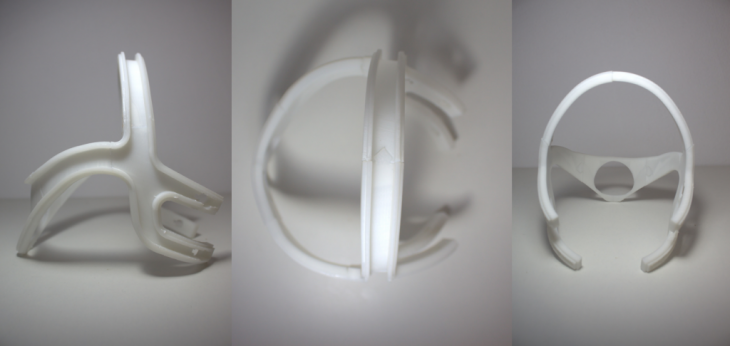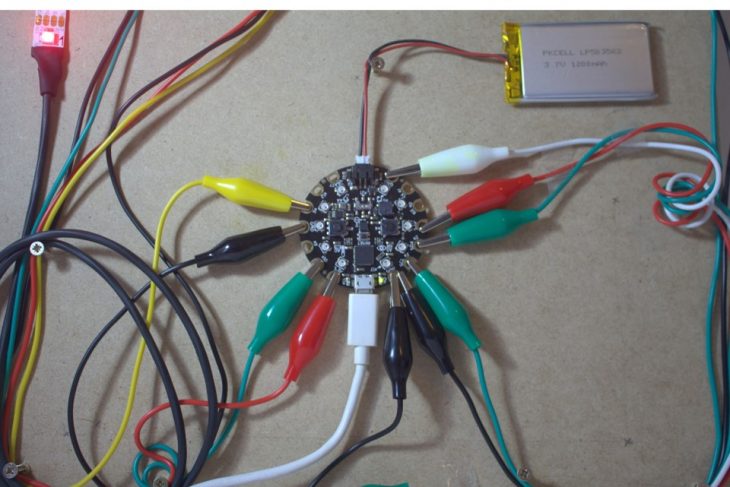M-Path
Project of IAAC, Institute for Advanced Architecture of Catalonia developed at MAA01 2019/2020 Faculty “Design Yourself”: Pablo Ros/ Cristian Rizzuti Students: Aditya Ambare/ Alisa Iureva / Siddharth Aryamane
Proposal takes place in today’s world, a world influenced by technology, social media, pollu- tion. Today people are losing the sense of empathy and misunderstanding each other. People are stressed, angered, overwhelmed and misunderstood due to many circumstances. Our mask aims to be a kind of “medicine” that helps its users regulate their emotions / behaviours using different therapy methods. In addition, the masks also act as a protection against pollution. It acts on an individual level, where people can improve their behaviour thus creating empathet- ic and healthier relations with others.
What does “empathy” mean?
The definitions of empathy cover a wide range of emotional states, including caring for other people and having a desire to help them; experiencing emotions that match the emotions of another person; reasoning that the other person is thinking or feeling; and makes less distinct differences between opponents. It is also the ability to feel and share the emotions of another person. Some believe that empathy implies the ability to match other people’s emotions, while others believe that empathy involves being compassionate to another person. The presence of empathy may include an understanding that there are many factors that go into decision making and cognitive thinking processes.
Where does “empathy” start?
According to the Maslow pyramid, the foundation of human needs is physiology. We cannot reprogram human psychology as long as there are internal and external factors that determine biological processes. Healthy body — healthy mind. Positive reinforcement and regulation of aggressive states of the mind can not only improve the overall nervous and physical health of a person, but can also be identified in society as friendliness and commonality by satisfying the basic needs of comfort and safety.
Frequency.
There is a growing body of data showing that low frequency noise (LFN), defined as broadband noise with dominant content of low frequencies (10-250 Hz) differs in its nature from other en- vironmental noises at comparable levels. LFN at moderate levels might adversely affect visual functions, concentration, continuous and selective attention, especially in the high-sensitive to LFN subjects.
According to the American music theorist Jerrold Levinson, musical language is no less expres- sive a system of communication than ordinary human language as a subject of study of linguis- tics.Since music carries a much more powerful emotional charge than real life events, modern psychologists are increasingly resorting to the use of music therapy. One can explain its positive effect on a person’s condition at least by the fact that the reactions of our nervous system to cheerful and sentimental musical works are completely different. For example, participants in a recent experiment, after listening to a short composition, interpreted the neutral facial expres- sion as happy or sad, depending on which melody they heard.The emotions that arose under the influence of music can be divided into two types – perceived and felt. This means that a person is able to understand the mood of a musical work, even if he never had to experience such feelings in real life. So, in case of psychological disorders of a depressive nature, cheerful music only aggravates a person’s condition, while sad motives, on the contrary, bring bright colors back to life.
Color psychology.
Colors are the native language of the subconscious.Human reactions to color are associated with a change in motility and consciousness. The muscles of the body may contract or relax depending on the color seen. But we all perceive color differently depending on our cultural background, gender and age. For each color we have negative and positive associations, which is associated not only with physiological reactions to it, but also with cultural education.
Biological indicators of mood.
Emotion is a psychophysiological process: it is not only the experiences that we experience in response to some event, but the whole physiological “substrate” – what is happening in the body at this time. The emotional process has three components: experience (awareness at the psyche level), physiological processes in the nervous, endocrine, respiratory and other systems of the body, as well as the “response” — a complex of expression of emotion, for example in the form of facial expressions, laughter or crying. That is, when the body reacts to a certain stimulus, reactions are triggered, which ultimately lead to the manifestation of emotions. But the same reactions can be triggered by other methods, such as chemicals or other body processes that affect similar metabolic pathways. This means that we can experience sadness or joy for no apparent rea- son. The absence of a “real reason” for sadness does not make the experience unreal itself. But understanding how and why it arises will help control unwanted emotions and not be ashamed of them if you can’t hold back.
Quick reactions. When the body needs to immediately respond – in case of danger or if the sit- uation catches us by surprise – the level of adrenaline rises sharply in the blood. This is the “stress hormone”, it is responsible for mobilizing the body. When the brain evaluates the situation as stressful, neurons send a command to the adrenal glands – the glands that synthesize adrena- line. Everyone knows the feeling of “throwing heat.” It is the adrenal glands that secrete adren- aline, and it instantly spreads blood through the body. A set of reactions was laid down by evolution, for example, a short-term sharp increase in body temperature and an acceleration of the pulse, that should arise to help avoid danger: under the influence of adrenaline, mental activity, nervousness, anxiety and anxiety increase. Adrenaline speeds up the heartbeat and improves muscle tone. Response. The heart rhythm is directly related to breathing, deep breathing calms the heart- beat, and in the body, reactions inverse to adrenaline excitement are slowly started. According to studies of eastern medicine, there is a connection between physiologically impor- tant points and an improvement in a person’s condition. The impact on these points in conjunc- tion with the right sound frequency can calm breathing, and then other body processes.
Massage.
Acupressure is the oldest method of treating the body and restoring vital energy. As a separate area of massage technology, it was formed on the territory of modern Korea, Japan, China and Mongolia. This happened after the eastern physicians discovered special points on the surface of the human body, responsible for the work of many internal organs and the function- ing of entire systems. To date, more than seven hundred such active points have been found that form peculiar channels of Qi energy circulation. Acupressure primarily highlights the nature of understanding the healing process itself. That is, it is not just a mechanical irritation of certain points of the body in which multiple nerve endings are concentrated. Acupressure facial mas- sage improves blood circulation of the facial muscles, stimulates the renewal of epidermal cells, reduces the number of wrinkles, tightens the skin. At the same time, it allows you to cope with headaches and toothaches, get rid of insomnia, and treats sinusitis. Acupressure is especially effective in case of neuralgia of the occipital nerve, vibration and circular rubbing will stop the pain syndrome. Acupressure of the trigeminal nerve will also provide a subsidence of the inflam- matory process, reduce pain and restore facial expressions of affected muscles.
Solution.
The mask is an elegant solution combining the characteristics above. Minimalistic design of the device due to the shape of the streamline around the head does not create additional inconvenience to the owner, as well as subconsciously makes opponents perceive it as an open face, which positively affects the establishment of trustful contact. The combination of pulse values and body temperature gives us an understanding (input) of the owner`s condition. Based on this, the device works according to one of the given scenarios. The answer (output) is the combination of massage and sound frequency on the owner and the color palette as a message in the environment showing mood.
Design.
3d printed head gear.
Circuit

